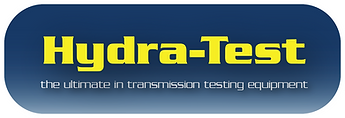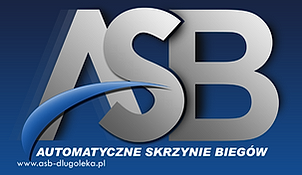Transmission Repair Businesses working with Hydra-Test
GET TO KNOW HYDRA-TEST
Hydra-Test is a brand that unites several test equipment product lines used by transmission rebuilders and remanufacturers worldwide. The flagship machine is the HT-VBT Deluxe which allows hydraulic performance testing of virtually all early and modern transmission Valve Bodies and transmission solenoids. Beyond this machine Hydra-Test has expanded into several different product lines to offer a full complement of equipment for transmission rebuilding and remanufacturing.
Hydra-Test Solenoid Test Machines include both the HT-Sol 25 benchtop solenoid test machine and fully automated HT-Sol EOL-AUTO production high volume solenoid test machine.
The HT2000 unit test machine gives technicians the ability to pressure tests a unit before the valve body is installed and our comprehensive line of test plates, means it’s a must have tool for cutting down comebacks or failed units on the dyno.
We recently introduced the DSG-0AM Test Stand to allow shops to properly test this unit. Offered as a stand-alone unit or as an addition that can utilize the HTC controller from the VBT Deluxe, this is a must have tool for anyone rebuilding these units.
In 2023 we will be finalizing and releasing a new design of a complete line of Torque Converter remanufacturing equipment as well as other driveline test machines.
For 2022 we are finalizing the design of our Transmission Dynamometer.
This dynamometer will allow full testing of complete transmissions from early hydraulic units to the modern 10 speed units in today’s cars and trucks. With the addition of our proprietary TEHCM tool for interfacing with mechatronic units, this will be the full solution for transmission testing.
COMPANY ORIGINS
HISTORY OF HYDRA-TEST
Hydra-Test products were launched by Hydra-Test Ltd, a company originally formed by Bob Fotheringham and his colleagues in the early 1990s. In those days Bob was a distribution agent for Answermatic machines throughout Europe and the UK. The Answermatic machine was produced by a US company but despite being a quality tool for that era it lacked adapters and test plates to test domestic European Valve Bodies. Bob recognized a market for an updated designed machine with a wider test plate coverage. This was the push that led to the creation of the first units prototyped and produced under the name “Hydra-Test”. This was in 1992 and a few years later, in 1996 the first Valve Body test machines were produced for a select group of UK Customers.
1990s – Establishment of Hydra-Test Ltd. and supplies to UK and Western Europe.
2000s – Introduction of revolutionary VBDaq and VBDaq+ controller systems, advancing the testing methods and performance data processing, development of new test plates.
Early 2010s – Closer collaboration between Hydra-Test and Cottingham Engineering to provide a complete service of manufacturing, development and technical support with Alan Smith completing the purchase of the company after Bob’s retirement in 2013
2016 – Launch of cutting-edge HTC-S controller design replacing all previous generations of data acquisition systems and permitting Hydra-Test excel in support of 3rd party products (dynamometers and valve body test stands). Using a stacking expandable design and the latest processor technology, this modular controller allows the ultimate flexibility for DAQ and control.
2018 – Launch of the design of the Hydra-Test transmission dynamometer. The goal is to provide a modular design incorporating the best design element of all existing offerings. With prime mover offerings of 40-100HP this design covers everything from small automotive to on/off highway transmissions.
2020 – Launch of Hydra-Test USA as a distribution and technical support/sales office to handle distribution of equipment to North America and full customer support and service of all equipment.
2022 – Expansion of Hydra-Test USA with the launch of our Milwaukee based 5000 sq feet manufacturing and assembly facility for transmission dynamometers and torque converter equipment manufacturing and support.

HYDRA-TEST HT-VBT DELUXE CLIENT REFERENCE REVIEW
There are some common processes used regardless if you are a shop rebuilding a transmission on the bench or are a large reman with assembly lines for high volume production of units. In either case, there is a process of disassembly and determining what parts are good and can be reused, and which ones are bad and must be replaced. Many hard parts that can simply be inspected for wear, cracks, or other damage and determined very quickly if they are useable or not. Many soft parts are automatically replaced as they are not reusable. Between these two types of parts are the ones that require some level of testing to determine if they can be reused or if they need to be replaced. Solenoids are a prime example of such a part since a hydraulic test is required to determine if they are still functioning properly.
In the last couple of articles, we used terminology relating to pressure control solenoids such as PWM, Frequency, and Duty Cycle. In this article, I thought I would go into depth on what these terms really mean and how they relate to solenoid control. As transmissions have gone from only a few pressure control solenoids to many or even having all of them as pressure control solenoids, a good understanding of these terms is critical for diagnosing error codes and testing components when vehicles come into your shop.
The variety and shape of solenoids used in modern transmissions change with each new model. On any rebuild, solenoids are a suspect part and should either be tested and verified for proper operation or replaced. Some shops opt to just replace all the solenoids on the valve body. On some models, that makes sense as the replacement solenoids are fairly inexpensive. For other models, the cost of the solenoids makes it worthwhile to test and only replace the ones that are worn or faulty.
In our last article we talked about frequency and how it relates to the mechanical response of a solenoid when Pulse Width Modulation (PWM) is used to control a solenoid. We discussed some of the theory, but what does this look like with an actual solenoid? How does frequency affect the response of a solenoid and how critical is matching the OEM frequency when driving a solenoid, especially when we start talking about testing and reclaiming solenoids.

































